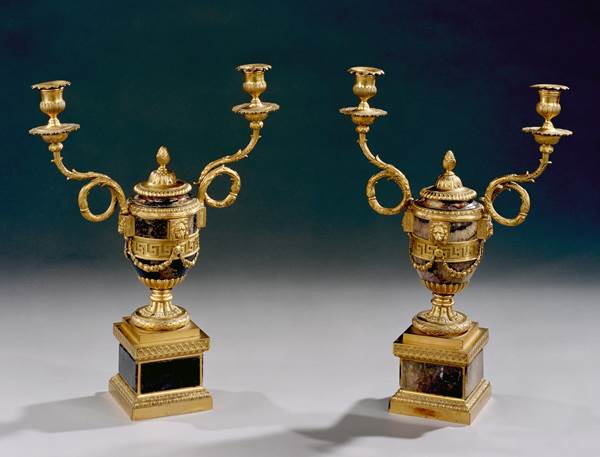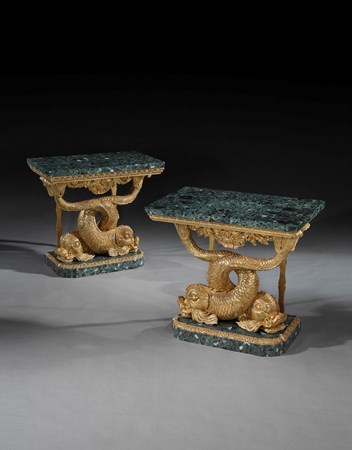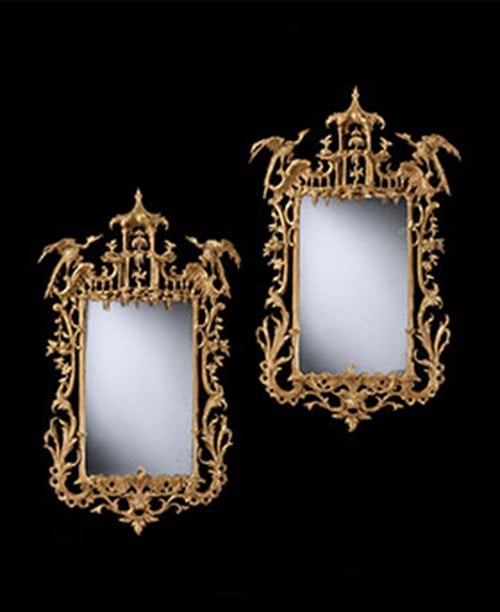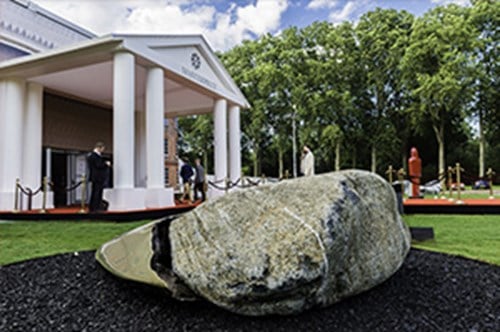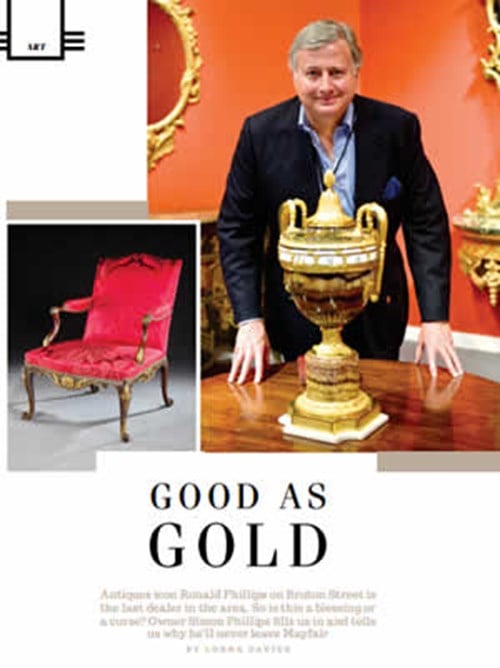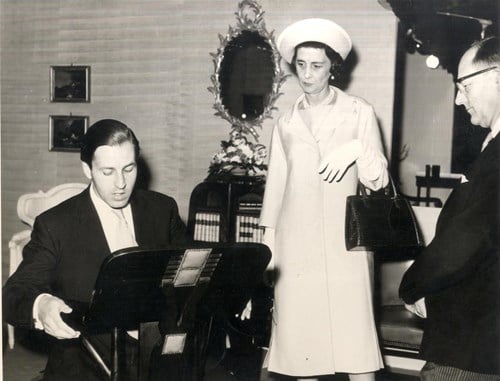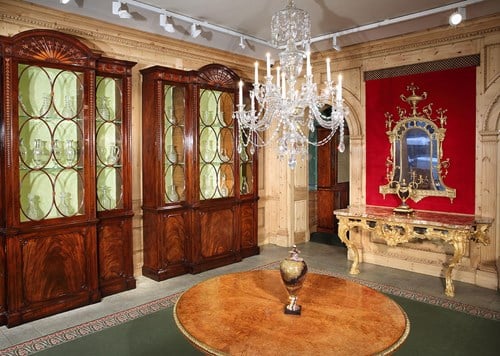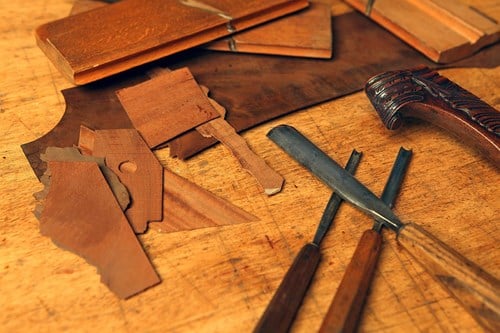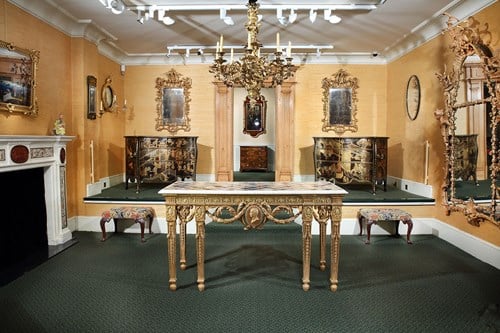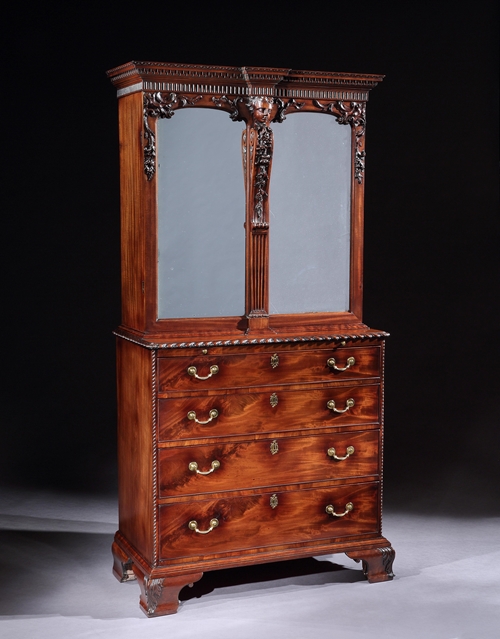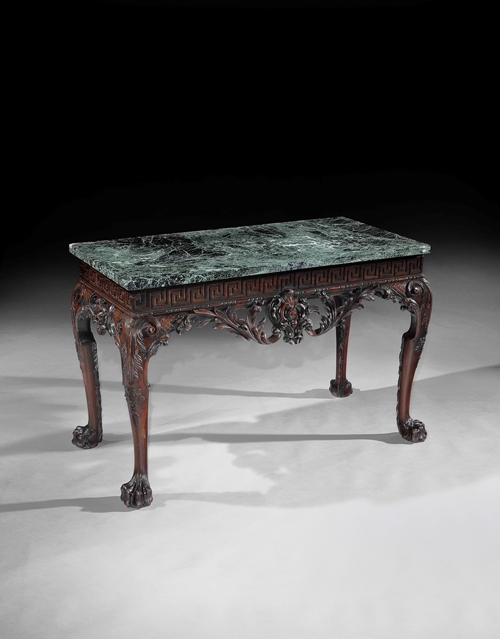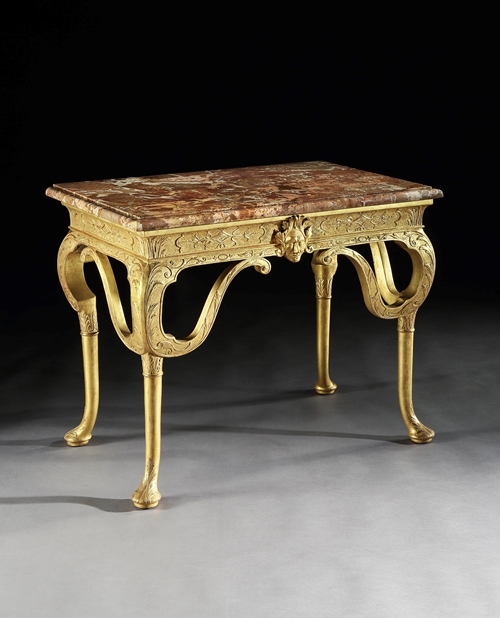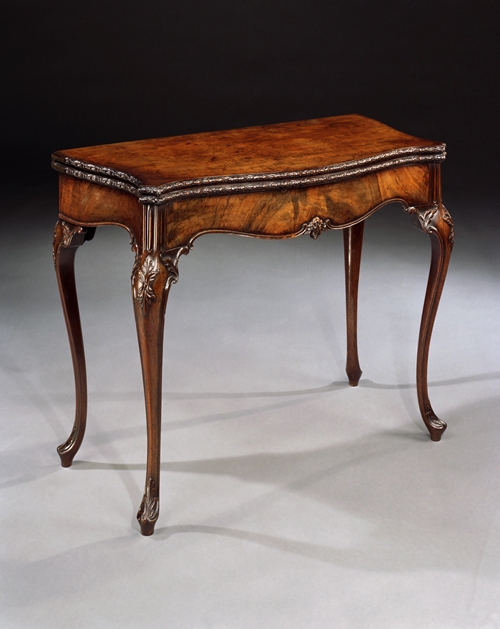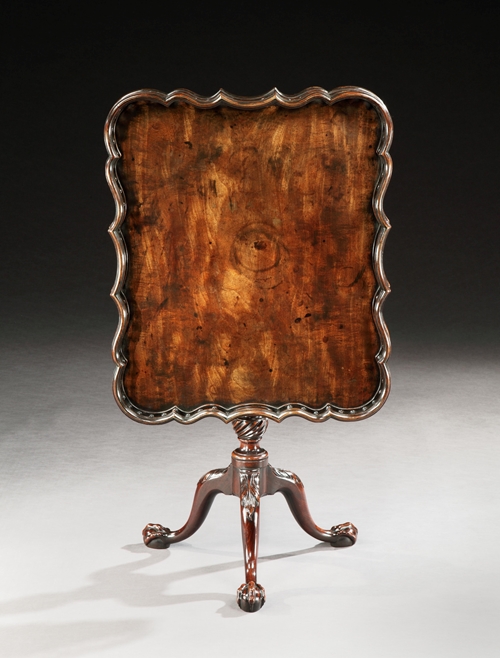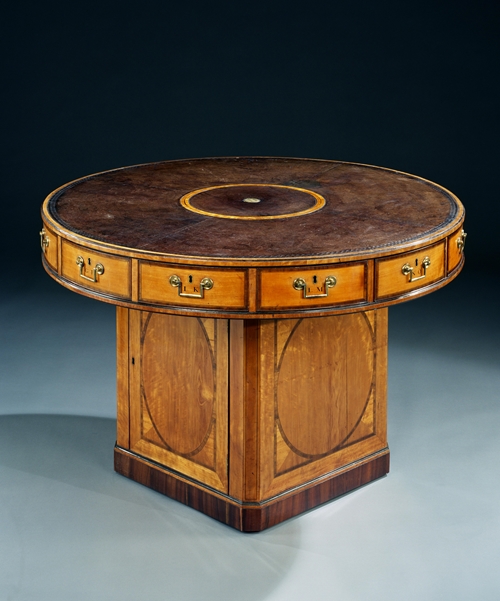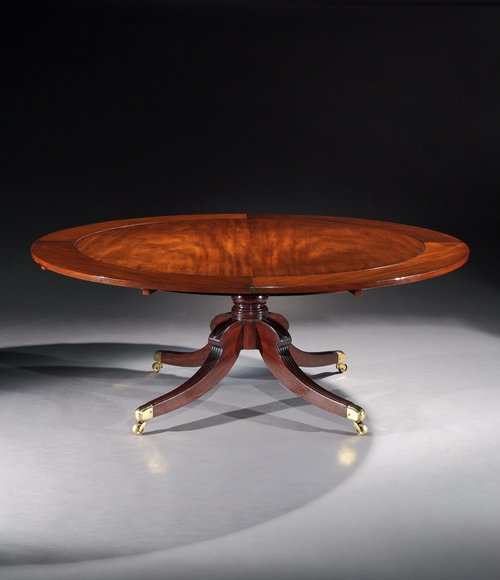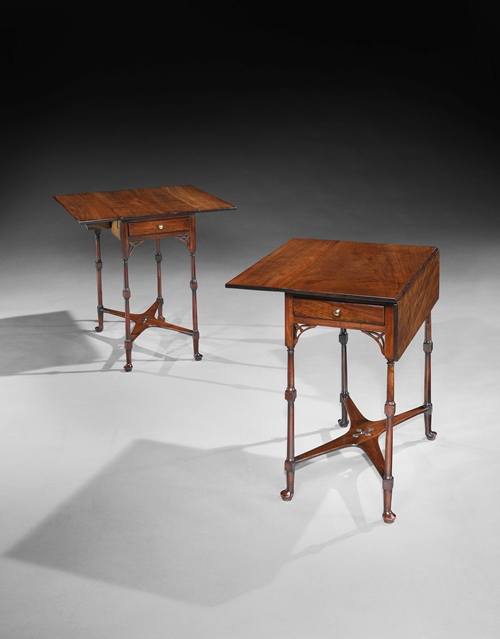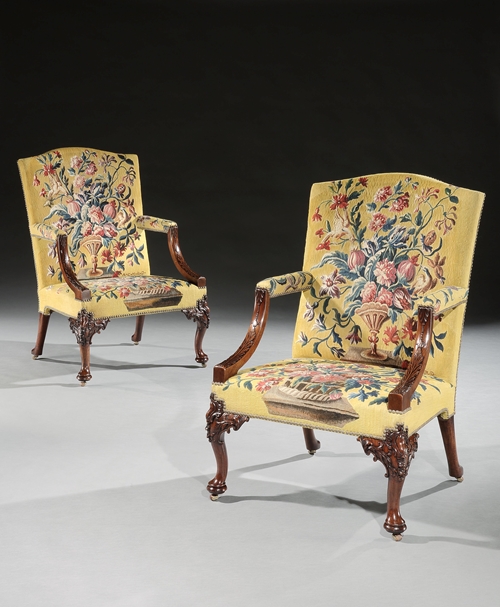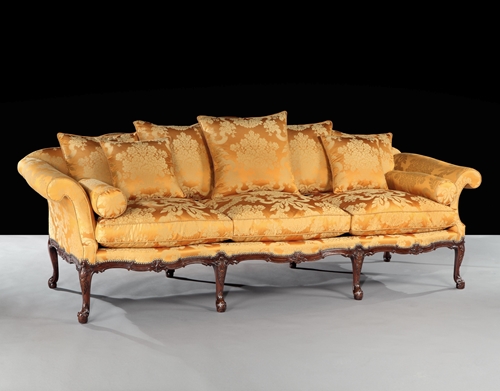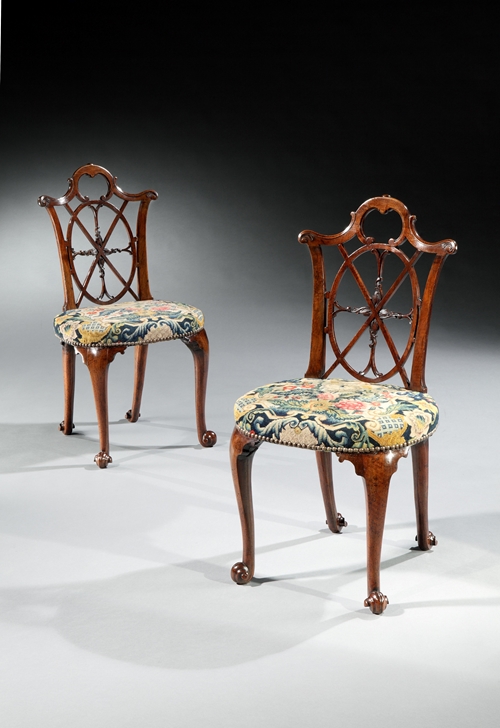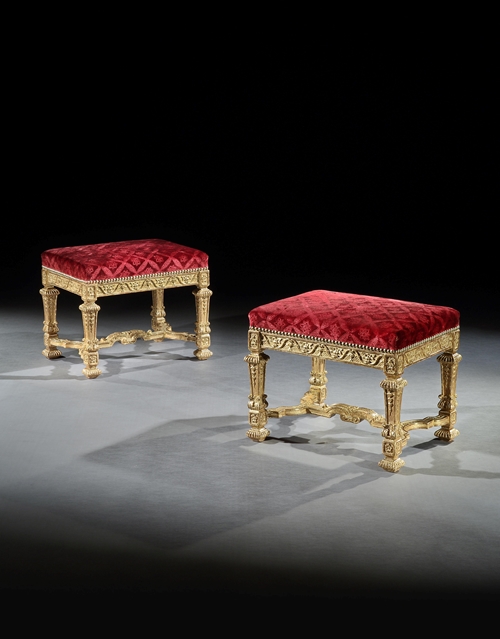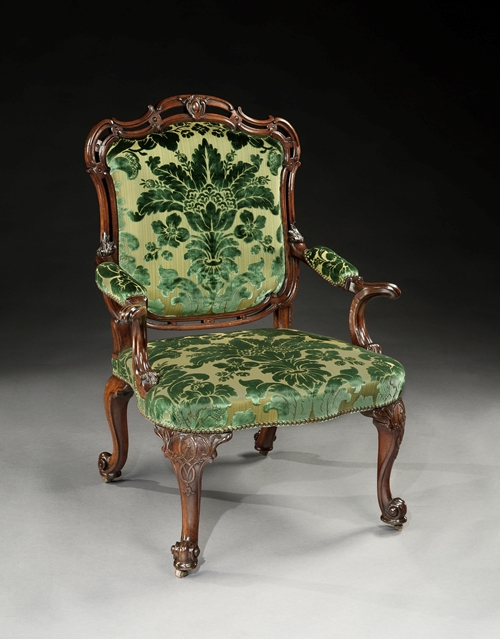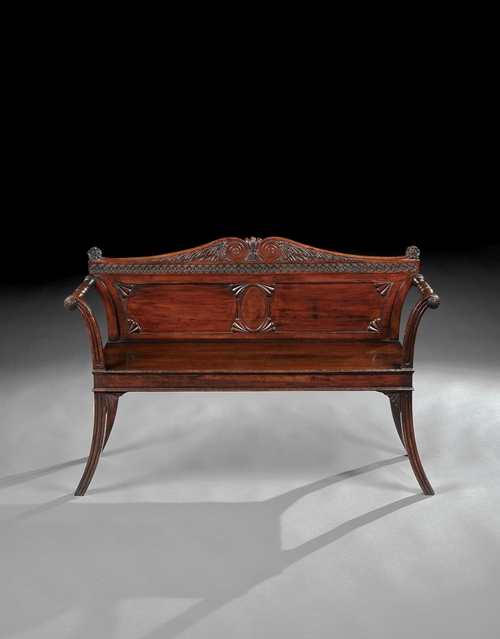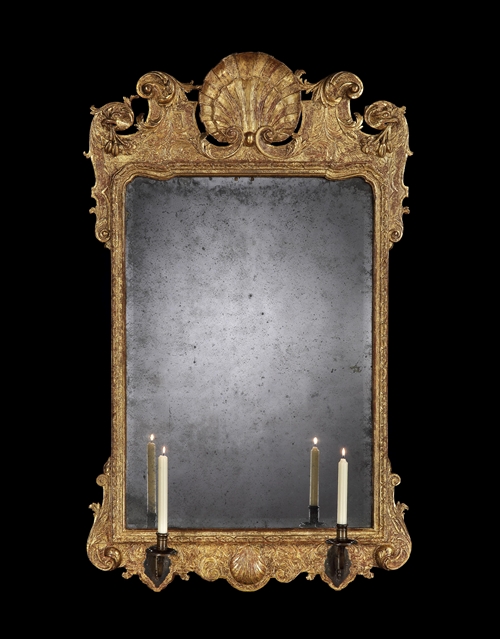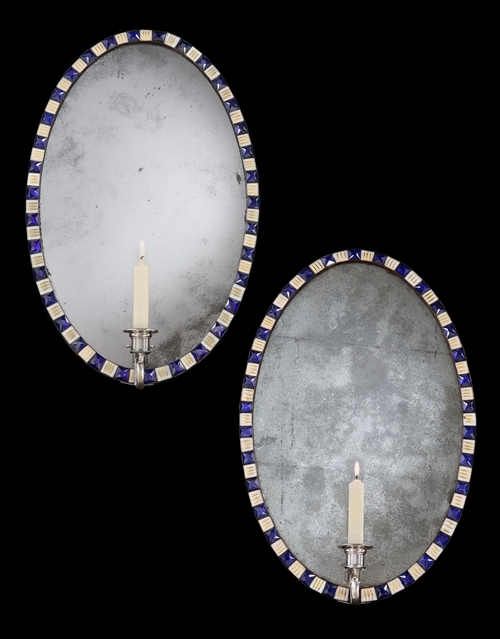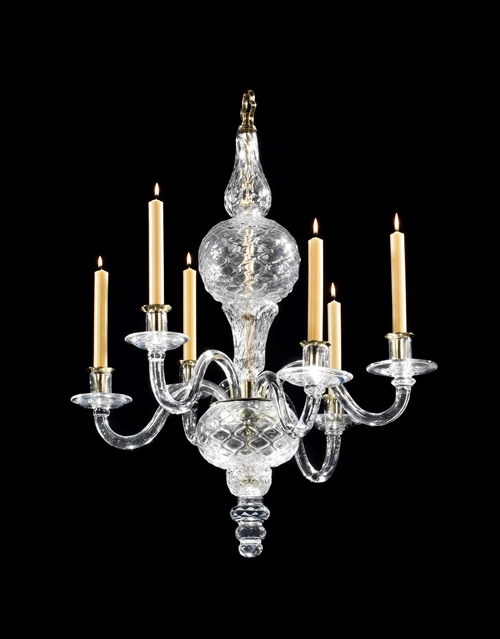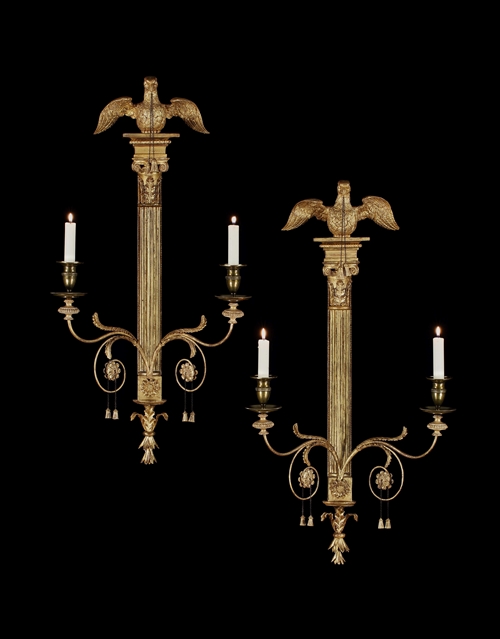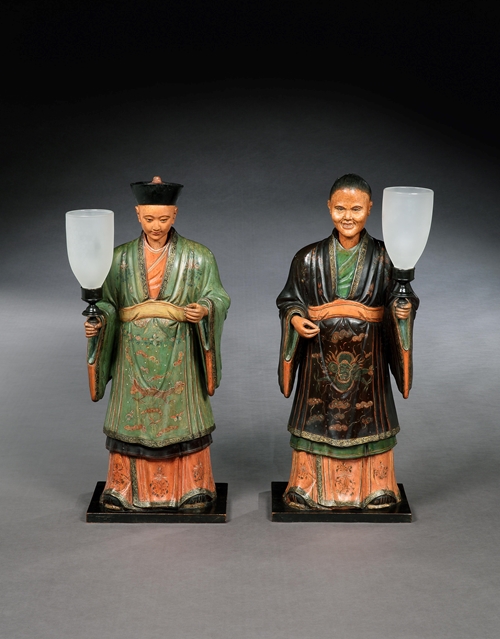An important pair of late 18th century ormolu mounted and blue john candle vases by Matthew Boulton, the removable scrolling foliate candle arms headed by leaf-cast drip pans and sconces issuing from a central vase with gadrooned and leaf decorated lids and pine-cone finials revealing silvered interiors, the bodies with lion mask tablets milled at the sides above key pattern collars hung with floral swags with lobed ornament beneath, on multiple lion feet stems within laurel wreathes, the stepped plinths with guilloche and acanthus borders divided by inset blue john panels.
Matthew Boulton and his partner, John Fothergill, founded their metalwork factory in Soho near Birmingham, in the 1760s. The firm produced silver, Sheffield plate and ormolu ornaments and received commissions from a number of leading patrons such as George III and Catherine the Great. Vases accounted for the majority of the firm's production, which included inkstands, ice pails, tripods, girandoles and obelisks.
This pair of vases belong to a group of closely related examples including; an identical model at the Metropolitan Museum, New York, illustrated in Goodison (1974) pl.102; a pair without candle arms in the Royal Collection, illustrated Goodison (2002), p. 290, pl. 246; a pair at Shugborough which similarly are without candle arms supplied to the Earl of Litchfield, and a pair at Harewood which feature no loops to the branches and presumably supplied to Edwin Lascelles. Together they represent some of the earliest mounted stone vases of this size produced at Soho and can be the identified as the `Bingley' vase offered on the first, second and third days of the Christie's London sale in 1771 (11th April lots 40 and 78, 12th April lots 59 and 84, and 13th April lots 26 and 58) with the description `a rich vase lined with silver and branches for two candles, standing on a square pedestal of radix and amethyst and ormolu'. They appear almost always to be of twin branch form on a pedestal. They cost £15 15s. 0d. Each and pairs were purchased for this sum by Sir John Griffin in 1771 and Mr Thynne in 1772. During the same year a pair of `lyon faced' vases were loaned to Robert Child the banker while he awaited delivery of a pair of wing-figured vases. It was usual for Boulton's clerks to use both identifying names and stock numbers derived from design sketches in their pattern books as a means of recognising the various types of ornament. In this instance it seems that the name Bingley corresponds to William Bingley the manager of the plated department (see Goodison (2002) p.283). The paw feet and lion mask are also featured on Boulton's lion-faced candlestick illustrated Goodison (2002), pls.16 & 135 which Boulton apparently copied from a French model. Indeed ormolu examples of the 1760s without branches are commonly attributed to the doreur-ciseleur Pierre Gouthière (1732-1813). It is therefore possible that Boulton was influenced by examples he saw on his visit to Paris in 1765, or that he derived the design from a Gouthière candlestick in the stock of an English retailer (see Goodison (2002) p.66).
Other examples of this model may also be seen in ‘Nicholas Goodison: Ormolu: The work of Matthew Boulton', London, 1974, pl. 102, Partridge Fine Arts, 'Summer Exhibition Catalogue', 1987, p. 118-119, cat. No. 41, 'The Art Collection of Viscount Leverhulme', 1926, part 1, cat. No. 165
Literature: Nicholas Goodison, Matthew Boulton: Ormolu, London, 2002, p.288, Pls. 244 and 245.
-
Provenance
Possibly included in Matthew Boulton's sale at James Christie's, Pall Mall, London 11-13th April 1771.
H. Blairman & Sons Ltd., In the 1960’s.
Private collection of a nobleman until 2007.
Looking for something similar? YOU MAY ALSO LIKE
YOU HAVE RECENTLY VIEWED ITEMS
- CAN WE HELP YOU?
- +44 (0)20 7493 2341
- [email protected]
